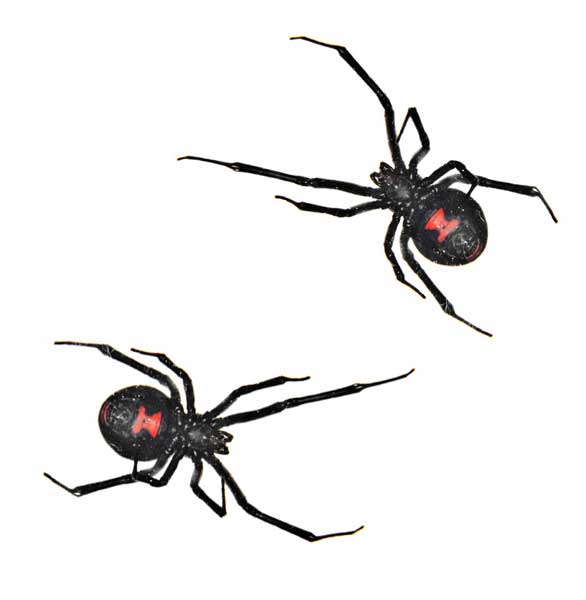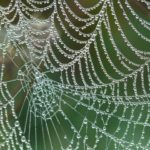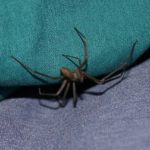Welcome To Our Spider Learning Center
SpidersAlthough spiders are greatly feared, only a few species are dangerous. Most species are beneficial, feeding on insects and other arthropods.
Description
Spiders are classified as arachnids, as they have eight legs instead of six. Their body is divided into two parts: the cephalothorax (the head and thorax combined) and an abdomen. Most spiders have eight eyes, but their eyesight is poor.
Spiders can range in length from 0.02 to 3.5 inches. The largest spiders are tarantulas and goliath bird-eating spiders. Females tend to be larger than males. Spiders can be found in a variety of colors, including black, brown, gray, and various shades of red, yellow, and green. Some have patterns or markings.

Additional Information
Signs
 Do you have spiders in your home? The most obvious sign is that you actually see spiders in your home. Another common sign is the presence of spider webs. Keep in mind that spider webs and cobwebs are not the same. Cobwebs are unused webs that are old and dusty. Spider webs, on the other hand, are actively used. They can be found in various parts of the home, including corners, along ceiling beams, chandeliers, behind furniture, and in open containers.
Do you have spiders in your home? The most obvious sign is that you actually see spiders in your home. Another common sign is the presence of spider webs. Keep in mind that spider webs and cobwebs are not the same. Cobwebs are unused webs that are old and dusty. Spider webs, on the other hand, are actively used. They can be found in various parts of the home, including corners, along ceiling beams, chandeliers, behind furniture, and in open containers.
Here are some other signs that you might have a spider infestation in your home, business, or yard:
- Egg sacs. Egg sacs can be found in webs, crawlspaces, and containers. These small white balls may contain hundreds of baby spiders. Just one egg sac can lead to an infestation, so you need to get rid of these sacs if you see them. Store-bought sprays can be useful, but your best bet is to hire an exterminator.
- Droppings. Spider droppings are not noticeable like say, dog or cat poop, but they can be a sign of spiders. Spider droppings are small black dots that look like black paint splatter. They are often found in attics and corners of your home.
- Moist and dark spaces. Spiders like to lay their eggs in dark, muggy areas of the home. They also like places that have a lot for them to eat as well as places that have minimal human traffic. That’s why basements and attics are common places for spiders to hide, seek out food, and live.
- Flying insects. If you have flies, mosquitoes, moths, and other flying creatures in or around your home, you can bet that you have spiders, too. Spiders love eating these bugs, so be warned that you probably have a spider or two hanging out waiting to feast on these yummy pests. You’ll likely find spiders around light sources, windows, and corners.
Dangers
Most spiders are venomous, but only two species are dangerous to humans: the black widow and brown recluse. Spiders do not actively seek out to attack humans, but they may bite or sting if scared.
When a spider bites or stings you, it can cause swelling, itching, pain, and blisters. In some cases, spider bites can cause allergic reactions, which may require a hospital visit. The black widow and brown recluse are the worst, though. Black widow venom packs a powerful punch of neurotoxins. The cytotoxins in the venom of the brown recluse spider can cause tissue damage and infection. The good news is that these bites are rarely fatal. You should still seek medical attention if you get bitten by one, though, as the risk of infection is still high.
Unlike mosquitoes, spiders do not transmit diseases. A spider infestation in your pantry or kitchen could contaminate your food, though, especially if the spider is poisonous.
Black Widow
Black widows are from the Latrodectus family, which includes true widows such as black widow spiders and brown widow spiders. They are known as widows because they engage in a form of cannibalism, consuming the male after mating. The bodies of black widow spiders range from 0.12 to 0.39 inches long. Female black widows may be as long as 1.5 inches, including legs.
Female widow spiders are typically dark brown or a shiny black, with a red or orange hourglass on the underside of their abdomen. It’s also possible to have a pair of red spots or no marking at all. The male widow spiders often exhibit various red or red and white markings on the upper side of their abdomen. Young black widows are primarily orange and white.
Black widows are known for their bites. Although fatalities are rare, the black widow’s venom is reportedly 15 times stronger than a rattlesnake’s. It can cause muscle aches and nausea.
Brown Recluse
The brown recluse is also known as a violin spider due to the violin-shaped patch on its head. They are typically a grayish yellow-brown, with an oblong abdomen covered with fine gray hairs. The legs are long and slim and darker than the body. Females are larger than males. Not counting the legs, they may be 1⁄4 inch long. Including the legs, they may be about 1 inch long.
 Brown recluse spiders are usually seen walking or running around, not in a web. They will bite if they feel threatened. Brown recluse bites can cause redness, itchiness, and pain. An untreated bite could cause blisters, bruising, and scarring, so seek medical attention.
Brown recluse spiders are usually seen walking or running around, not in a web. They will bite if they feel threatened. Brown recluse bites can cause redness, itchiness, and pain. An untreated bite could cause blisters, bruising, and scarring, so seek medical attention.
Contact Us Today
Spiders are annoying pests that can be scary to have in your home. With the right pest control, you can reclaim your home.
Contact the friendly team at Stride Pest Control for assistance. We have implemented a process that is sure to get pests out of your home once and for all. Call (512) 777-1339 (Austin) or (210) 547-8410 (San Antonio) or fill out the online form to schedule a free inspection.
rank in total species diversity
7
Types of spiders in the world
40,000
Types of spiders in
the U.S.
3,000
Average Rank of Spiders in list of fears
3
GET A FREE CONSULTATION TODAY!
Get a FREE Consultation

